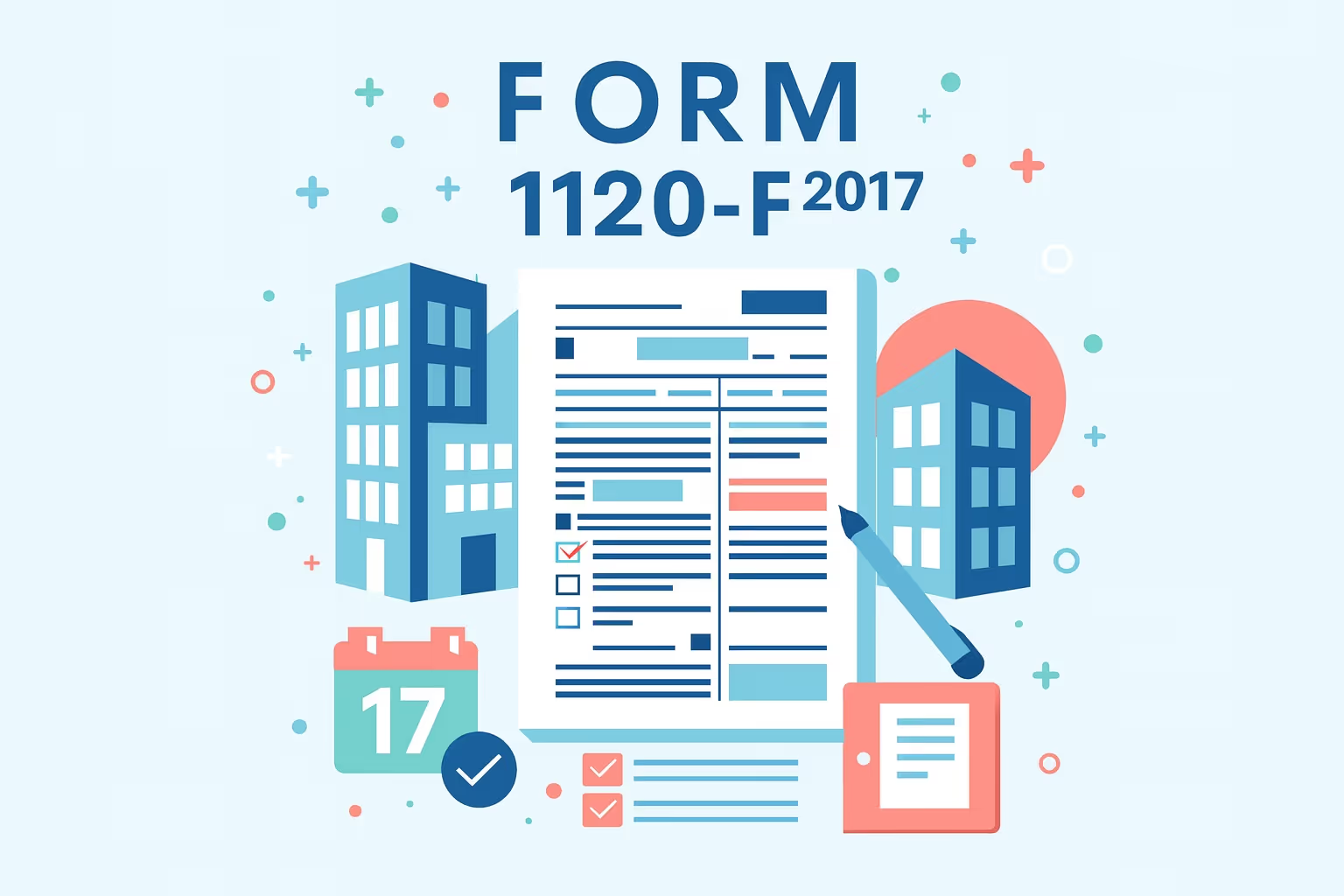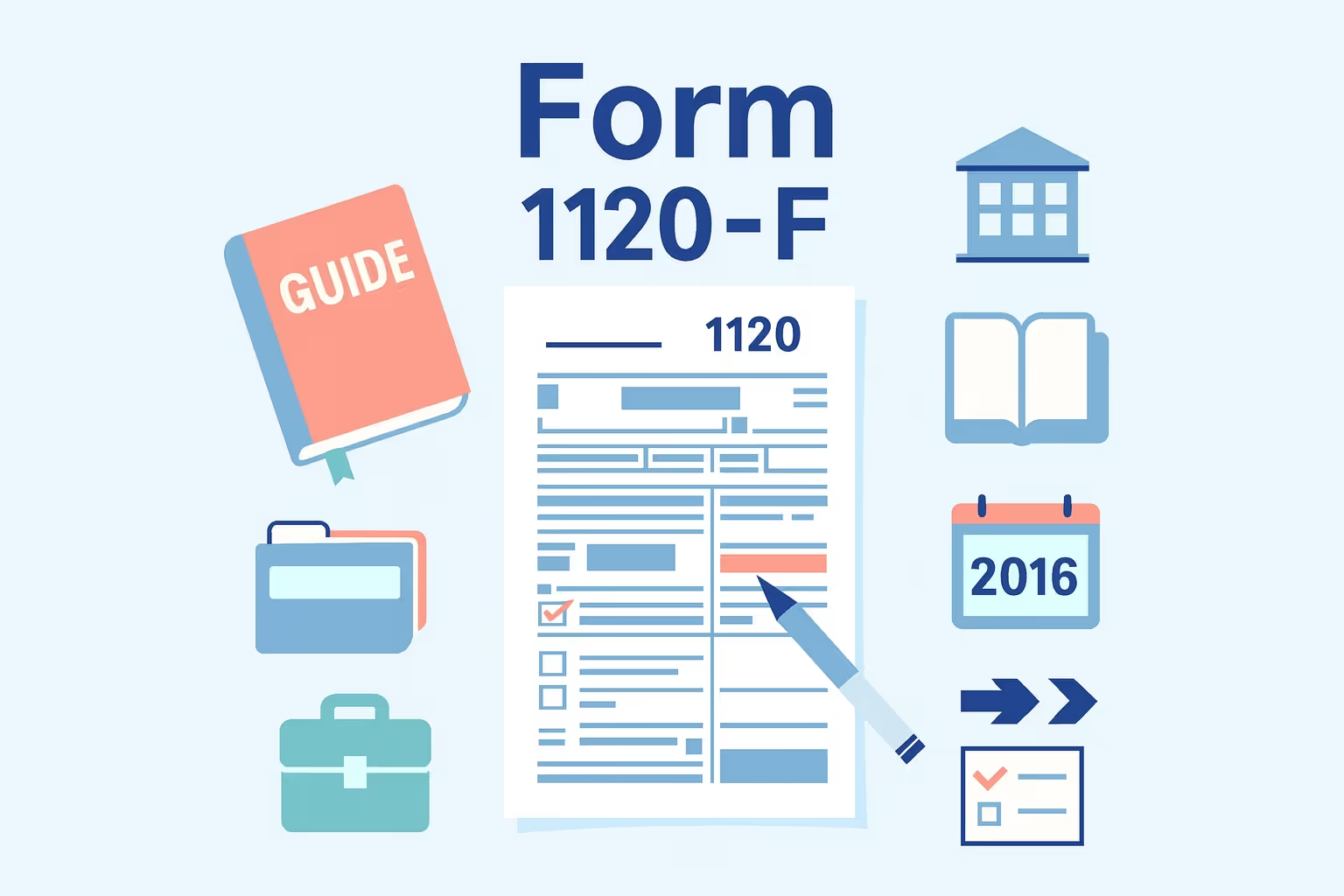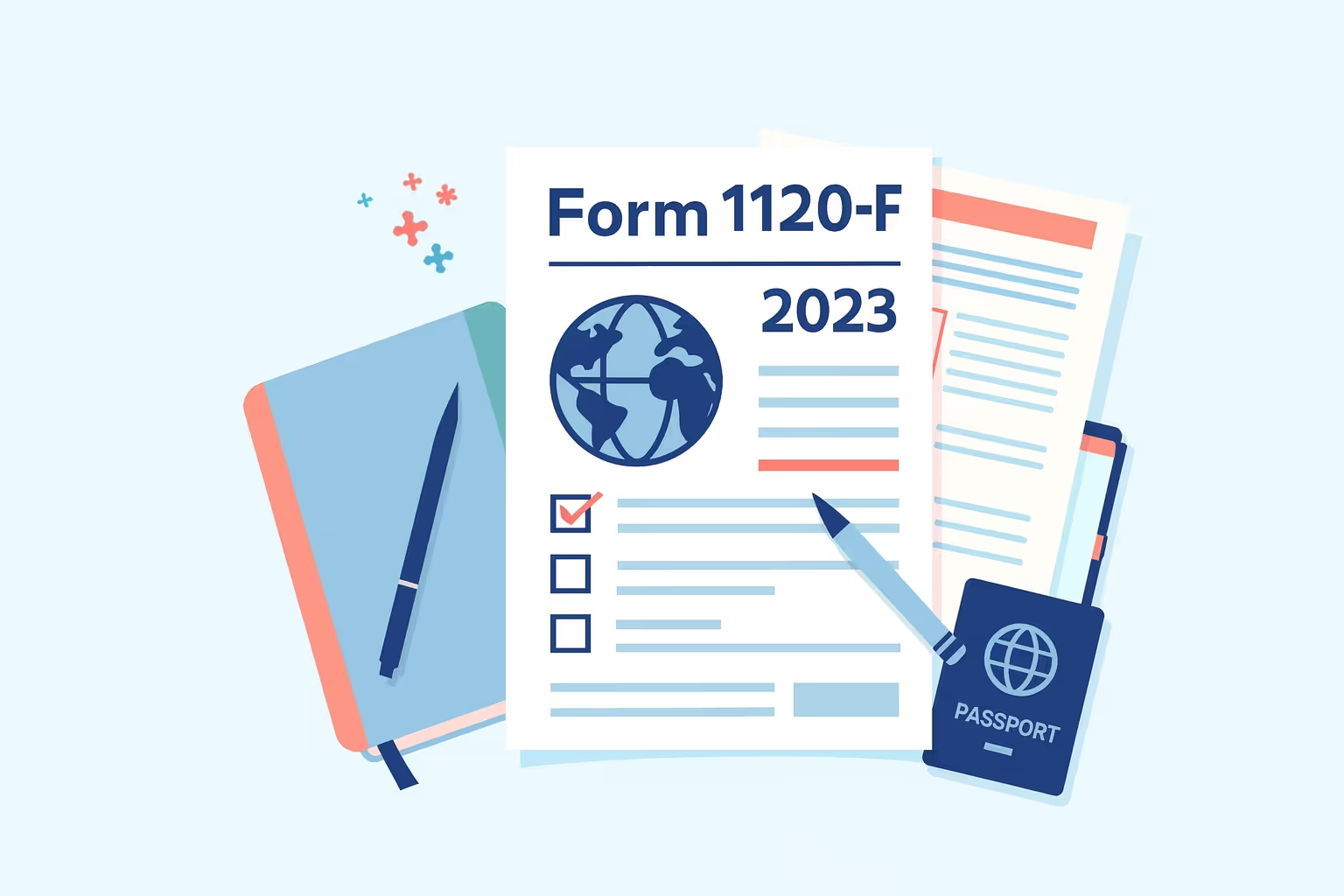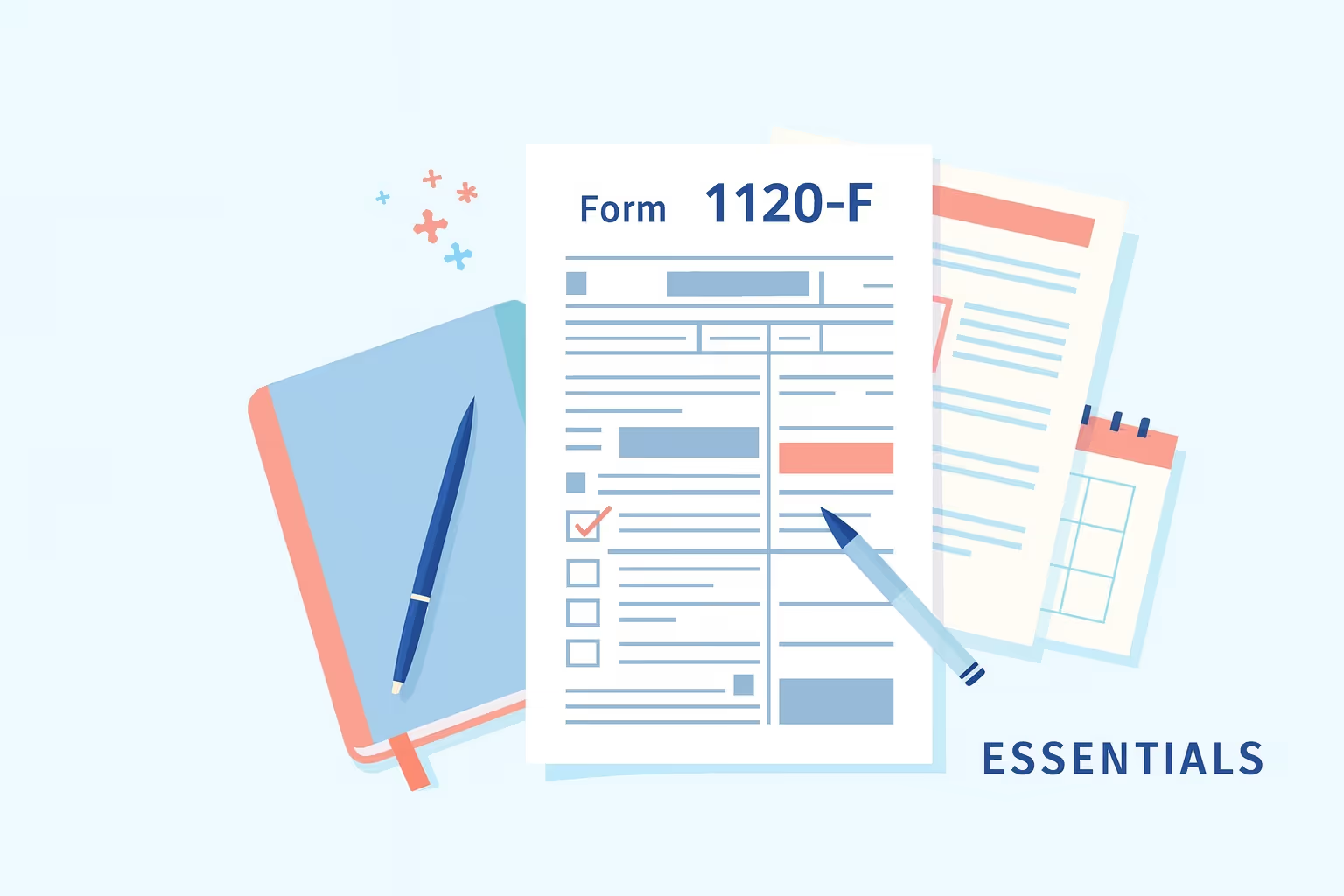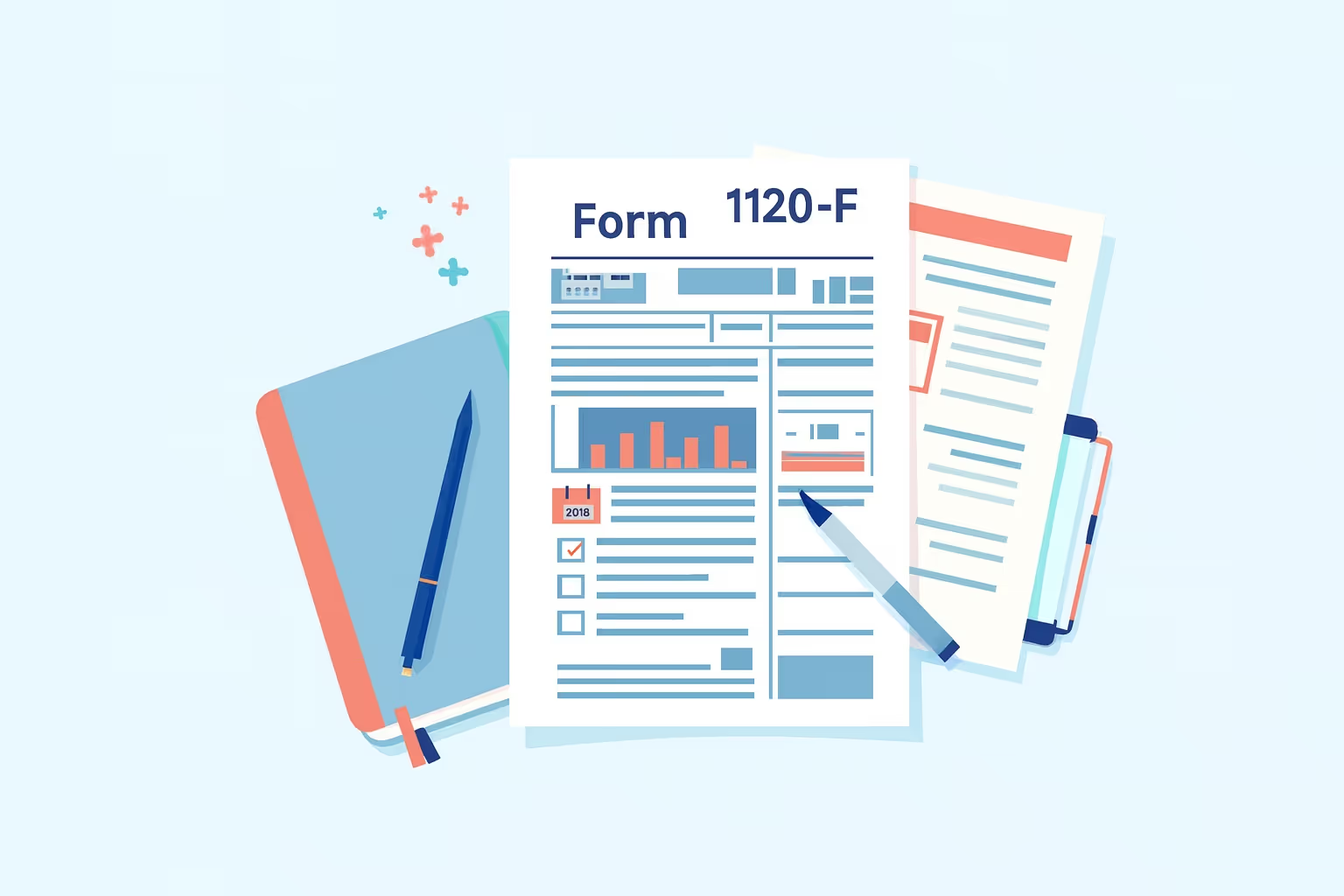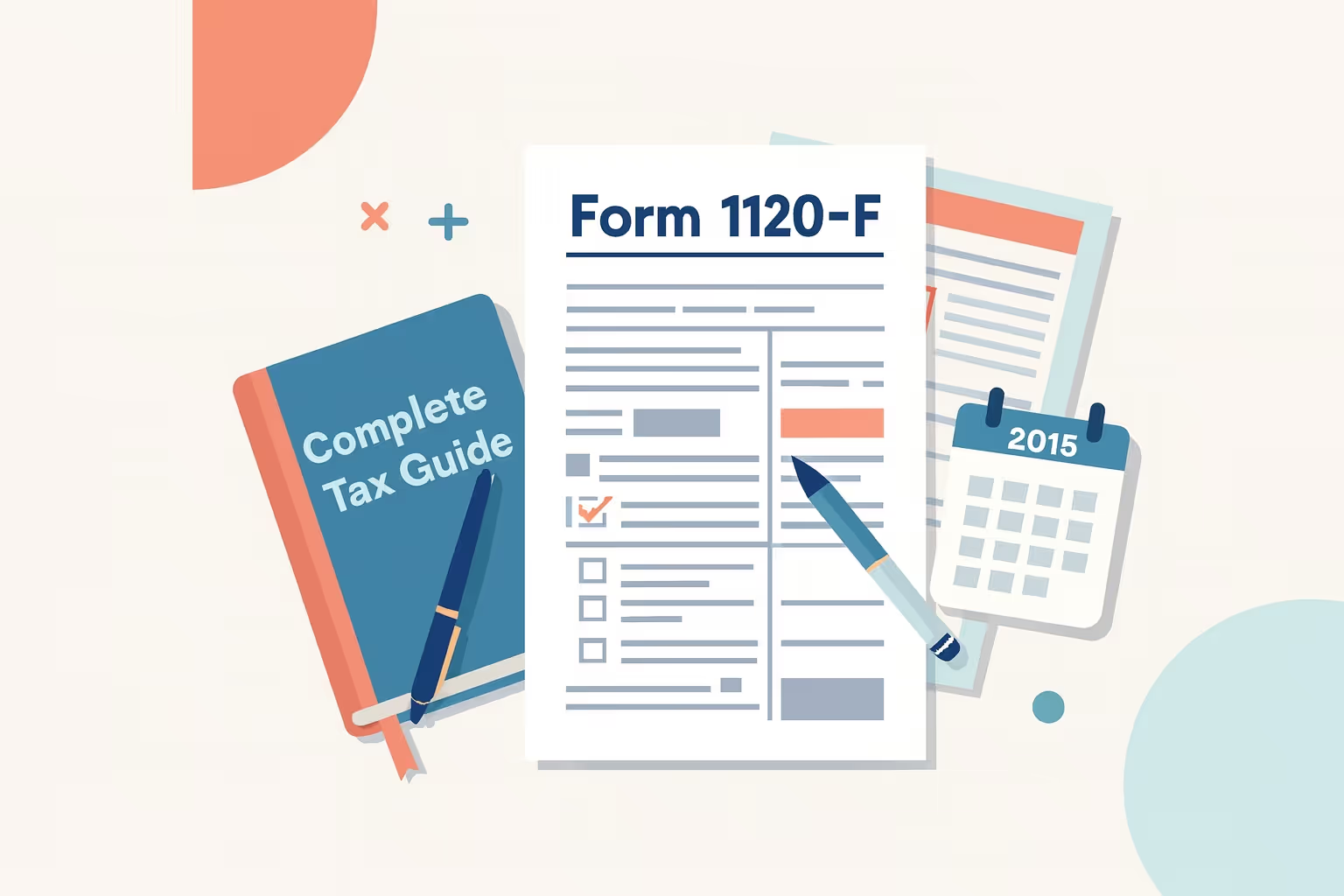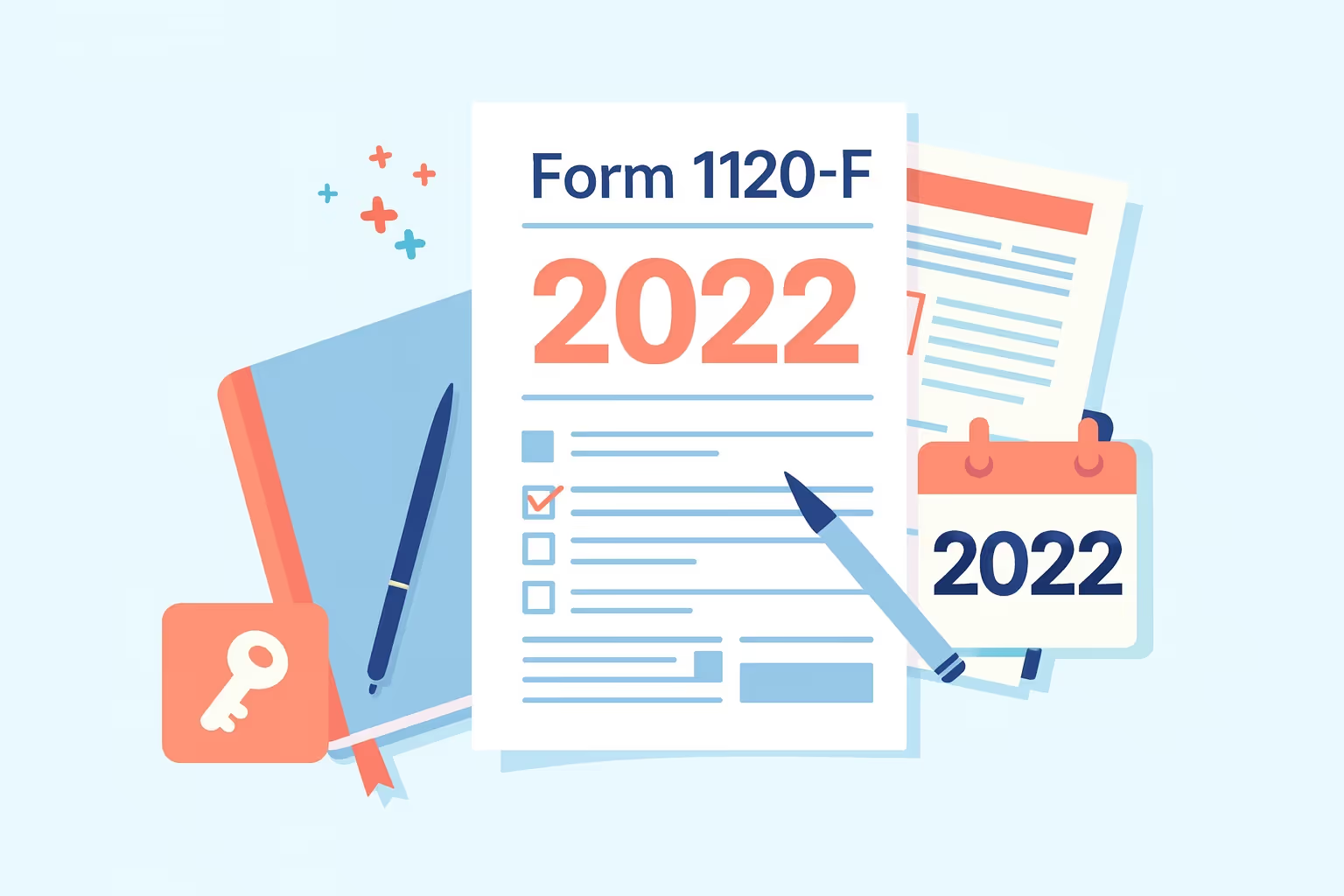
What IRS Form 1120-F (2017) Is For
IRS Form 1120-F (2017) is the official U.S. income tax return for a foreign corporation engaged in trade or business within the United States. The form enables companies based in a foreign country to report effectively connected income, gross income, and allowable deductions in accordance with federal tax laws. It determines a corporation’s income tax liability and documents any treaty benefits available through an income tax treaty between the United States and the corporation’s home country.
A foreign corporation must use Form 1120-F to disclose all business activities that generate U.S.-source income and claim any tax benefits, including credits, refunds, and deductions related to withholding tax or prior payments. Filing ensures full compliance with the Internal Revenue Service, which uses the form to confirm that income is reported correctly and taxed under U.S. jurisdiction, supporting transparency and accuracy in corporate financial reporting.
For complete details on foreign corporation filing procedures, deductions, and U.S. source income reporting, see our Form 1120-F (2017) Foreign Corporation Income Tax Return Guide.
When You’d Use IRS Form 1120-F for 2017
Foreign corporations that operate or earn income in the United States must determine whether their activities create a U.S. filing obligation. Understanding when to file IRS Form 1120 F 2017 helps corporations meet their income tax and reporting responsibilities accurately. The filing ensures that effectively connected income is declared correctly and tax is paid in accordance with U.S. federal law.
Filing Requirement for Foreign Corporations
A foreign corporation must file Form 1120-F if it engages in U.S. trade or business and earns gross income from those operations. The return establishes income tax liability, discloses deductions, and identifies treaty benefits available under an income tax treaty. Corporations that have made prior withholding tax payments must also report them for credit or refund purposes.
Late, Amended, or Protective Returns
A protective return applies when a corporation is uncertain about its U.S. tax exposure. Filing it preserves eligibility for deductions, refunds, and credits if the Internal Revenue Service later determines that the income is taxable. Filing an amended return corrects reporting errors and maintains accurate compliance for the 2017 tax year.
Key Rules or Details for the 2017 Tax Year
The 2017 tax year introduced specific filing requirements for foreign corporations completing IRS Form 1120-F. Corporations that operated across the transition period of the Tax Cuts and Jobs Act used blended income tax rates to determine their overall tax liability. Compliance with federal tax laws required accurate reporting of effectively connected income and deductions.
Key requirements included:
- Blended Corporate Tax Rates: Companies with fiscal years spanning 2017–2018 calculated tax using both pre-TCJA and post-TCJA rates to determine the correct blended rate.
- Deduction Rules: Entertainment expenses incurred after December 31, 2017, were no longer deductible under the 2017 tax provisions.
- Withholding Tax Adjustments: Foreign corporations reported prior withholding tax credits when calculating their total income tax due for 2017.
The 2017 tax year required foreign corporations filing IRS Form 1120-F to follow transitional rules from the Tax Cuts and Jobs Act. Filers calculated income tax liability using blended rates and reported effectively connected income, deductions, and withholding tax adjustments to maintain compliance with U.S. and international tax treaty standards.
Step-by-Step: How to File Form 1120-F (2017)
Foreign corporations filing IRS Form 1120-F (2017) must follow a structured process to ensure accurate reporting. Each stage confirms that all effectively connected income, deductions, and treaty benefits are adequately documented. Careful preparation supports compliance with federal tax laws and avoids future income tax discrepancies.
Step 1: Gather Records
Collect all financial records that show gross income, assets, expenses, and prior withholding tax payments.
Step 2: Use the Correct Form
Download and complete the 2017 version of IRS Form 1120-F to report your corporate income tax return accurately.
Step 3: Attach Required Schedules
Attach Schedule H for expenses, Schedule I for interest, and Form 8833 to claim income tax treaty benefits.
Step 4: Calculate Tax Liability
Calculate the total income tax liability after applying all eligible credits and deductions.
Step 5: File and Retain Copies
Send the completed form to the IRS Service Center in Ogden, Utah, and keep copies for recordkeeping and future audits.
Common Mistakes and How to Avoid Them
Errors in filing IRS Form 1120 F 2017 can increase income tax liability and delay processing of a foreign corporation’s return. Following these preventive steps ensures accurate reporting and ongoing compliance with U.S. tax laws.
- Incorrect Form Version: Always use the official 2017 version of Form 1120-F from IRS.gov to ensure accurate filing and prevent rejection.
- Missed Protective Returns: File a timely protective return even when U.S.-source income is uncertain to preserve deductions and refund eligibility.
- Omitted Treaty Claims: Attach Form 8833 when claiming treaty benefits under a valid income tax treaty to prevent disqualification.
- Incorrect Income Reporting: Review all gross income and withholding tax amounts before filing to ensure accurate tax reporting.
- Incomplete Documentation: Keep complete receipts, agreements, and financial records to support deductions and credits during an IRS review.
What Happens After You File
Once a foreign corporation submits IRS Form 1120 F 2017, the Internal Revenue Service begins reviewing the filing for accuracy and completeness. Processing typically takes 12 to 16 weeks, depending on the complexity of the corporate income tax return filed for IRS Form 1120 F 2017. During this time, the IRS verifies effectively connected income, deductions, and withholding tax credits to ensure compliance with U.S. federal tax laws.
Key Post-Filing Outcomes
- Acknowledgment: The corporation receives confirmation after the return is fully processed and accepted by the IRS.
- Refund Issuance: The IRS issues refunds when total payments exceed the calculated income tax liability.
- Tax Balance Due: The IRS notifies corporations of any remaining income tax owed and provides available payment plan options.
- Audit or Review: The IRS requests additional documentation when discrepancies appear in reported income or deductions.
Frequently Asked Questions
What is IRS Form 1120 F 2017 used for?
IRS Form 1120 F 2017 allows a foreign corporation engaged in U.S. trade or business to report effectively connected income, deductions, and credits. The form determines total income tax liability and applies any treaty benefits available under an income tax treaty.
Can a foreign corporation still file a late or amended return?
A foreign corporation may file an amended or protective return when it discovers unreported gross income or missing deductions. Filing maintains compliance and preserves eligibility for refunds and tax benefits.
How does the IRS calculate income tax liability?
The Internal Revenue Service evaluates gross income, allowable deductions, and withholding tax credits to compute total income tax due for the 2017 tax year.
What are the potential consequences of not filing?
Failure to file Form 1120 F can cause a foreign corporation to lose deductions, incur higher tax liabilities, or face delays in refund processing.
Can foreign corporations e-file their 2017 tax return?
For the 2017 tax year, foreign corporations were required to mail their income tax return to the IRS Service Center in Ogden, Utah, because e-file options were unavailable for that year.
For more information on corporate, partnership, and small business filing requirements, visit our Business Income Tax Forms and Filing Guides Library.




















